Books of inventions are a little-known category of Renaissance books: an excellent example is the 1578 the Théâtre des Instruments Mathématiques et Mécaniques de Jacques Besson, Dauphinois, Docte Mathématicien, published for the first time in 1571 or 1572 (Cornell University, Kroch Library, Division of Rare Books and Manuscripts, History of Science TJ144 B55 1578++). Born in Briançon (Dauphiné, France) around 1540, Jacques Besson was arguably the first author to showcase and publicize his modern prototypes in a book, in order to bring them to the attention of potential patrons by way of technical comments and illustrations. According to the 1578 preface, the purpose of such a theater[1] is both utility and pleasure: “Voici un théâtre de labeur immense, rempli de machines et d’instrumens plaisans à considérer, et très-utiles à pratiquer”.
Besson was a man of many parts.[2] He gained early fame by providing the town of Lausanne, Switzerland, with an ingenious pump for public fountains. Soon thereafter, he published his first treatise (on pharmaceutical distillations), titled De absoluta ratione extrahendi olea et aquas ex medicamentis simplicibus (Zurich [Tiguri]: Andreas Gesner, 1559; Kroch Library, Division of Rare Books and Manuscripts, Lavoisier QK99 Tiny) [ill. 1].
A second treatise followed in 1567: Le Cosmolabe, which described an elaborate instrument based on the medieval astrolabe which could be used for cartography, surveying, navigation, and astronomy. Natalie Zemon Davis noticed that the dedication to the Queen Mother, Catherine de’ Medici, was an attempt to win patronage and safety on the part of a former Lutheran pastor (1562-4). In 1569 Besson wrote L’art et science de trouver les eaux et fontaines cachées soubs terre, autrement que par les moyens vulgaires des agriculteurs & architectes– about scientific methods to locate groundwater (Kroch Library, Division of Rare Books and Manuscripts, Lavoisier GB661 B55).
The same year, when Charles IX of France [ill.2], then aged 19, made a royal visit to Orléans, the still young teacher of mathematics was allowed to present him the draft of a new sort of book, full of his inventions.[3] The king was enthusiastic, and he granted Besson the wonderful title of Maître des machines du Roi or “Master of the King’s Engines”; a lodging at the court; and exclusive rights to his designs. The royal patronage gave Besson a chance to “tell the world of the wonderful new possibilities of mechanical inventions, so long confined to the privacy of sketchbooks and personal manuscripts.”[4] We often think of the Renaissance as a time of great artistic patronage, but scientific patronage was important, too.
The first edition of the Théâtre des Instruments Mathématiques et Mécaniques was produced in a hurry, because religious intolerance was in full swing – it culminated in the Saint Bartholomew’s Day riot and massacre in 1572. Fearing for his own life, he fled to England, where he died the following year. Besson left behind him an incomplete book, with sparse captions for the prints.
And yet, his panorama of inventions proved popular enough that a series of new folio editions appeared after 1578, with a superb frontispiece and more detailed descriptions. For both his editions in Latin + French (1578, 1579 and 1582), the Lyon-based printer, Barthélemy Vincent, used the 56 copper plates engraved by Jacques Androuet du Cerceau for the original edition, except for four new plates engraved by René Boyvin. The book is dedicated to Francis Hastings (1514-61), the son of Anne Stafford, the wife of the Earl of Huntingdon and ex-mistress of King Henry VIII of England – she was briefly portrayed in the television series, The Tudors (2007). In a preliminary and often overlooked sonnet, poet François Béroald praised the young duke as “the new Hiero” (ainsi comme Hiéron… honorans ces arts en Sicile…) – a reference to the Greek King of Sicily who employed Archimedes during his reign from 270 to 215 BCE.
The outcome is spectacular, and explains why the book was translated into Italian (Lyon, Vincent, 1582), German (Montbéliard, Jacques Foillet, 1595), and Spanish (Lyon, Horace Cardon, 1602).[5] Previously, works on engineering and technology mostly reported inventions of the past, without providing much explanation. By contrast, Besson’s work was a collection of his recent inventions, with precise illustrations and technical specifications for each of them. He invented, among other things, the semi-automatic screw-cutting lathe [ill. 3], that could perform turning operations in which unwanted material was removed from a work-piece rotated against a vertical tool, cutting the piece safely, to the right of the worker.[6] Suspended weights helped to provide pressure on the tool and regulate the movements of man and machine. Another plate shows the prototype for a new royal carriage (“novum vehiculi regalis genus“) featuring a rear suspension to absorb the many bumps in the road. [ill. 4] It is constructed with an open lattice work top, allowing for visibility of the passengers inside – to see and be seen was essential for the entourage of a King.
What else? There is a fire-extinguisher that can be used at a certain distance, that is, without any risk for the firemen to get burned. [ill. 5]
Besson also invented a new musical instrument, whose metal strings, when touched with fingers or with a fiddle-bow, was supposed to produce a sound comparable to a lyre and a trombone combined… Last but not least, we see a new type of lectern (novum pulpiti genus), complete with magnifying glasses making it easier to read, especially for the short-sighted. [ills.6 and 7]
Besson was adamant that none of his inventions deserved “to be despised” (invention[s] non à mépriser): they actually made it possible to carry out tasks that were considered very difficult, dangerous, or even impossible to achieve. Now, for some scholars, Besson was too fanciful,
and did not really channel his contributions toward industrial needs and uses, choosing instead to invent sophisticated and expensive toys for the aristocracy. But the lathe and the fire-extinguisher are examples of Besson’s progressive belief that machines and instruments could improve the life of many people, rich and poor – not just princes and courtiers.
Today, this book has lost most of its utility; the pleasure, however, remains intact!
Laurent Ferri, March 2014[7]
[1] The expression, “théâtre des machines” was created by François Béroald for the 1578 edition. Regarding the importance of scenography for 16th c inventors, and science as social construction, I recommend the writings of Anne-Françoise Garçon.
[2] Cf. Alex Keller, “The Missing Years of Jacques Besson, Inventor of Machines, Teacher of Mathematics, Distiller of Oils, and Huguenot Pastor”, in Technology and Culture, Vol. 14, No. 1, Jan., 1973, p. 28-39. For Keller, Besson “always wanted to be a mechanical inventor, as indeed he makes clear in the envoi of his first book in 1559.”
[3] Presumably, the manuscript is now kept at the British Museum Add. Ms 17921.
[4] Keller, “The Missing Years…” p. 39.
[5] There was no English translation, but the work of Besson was known and discussed in London in the late 16th century. Cyprian Lucar inserted some plates from the Théâtre in his own “Treatise named Lucar Solace, divided into four Books, which in part are collected out of diverse Authors in diverse Languages, and in part devised by Cyprian Lucar, Gentleman” (London, by Richard Field, for John Harrison, 1590).
[6] See Graham Burnett, “Descartes and the Hyperbolic Quest: Lens Making Machines and Their Significance in the Seventeenth Century”, Volume 95, Part 3, American Philosophical Society, January 2005. Burnett points to “the conceptual proximity […] between mathematical instruments and mechanical systems for manipulating piecework on the lathe.” He praises Besson for achieving “a significant step toward the realization of self-regulating tools for fine manufacture.”
[7] For more information about History of Science and Lavoisier Collections in Kroch Library (Division of Rare Books and Manuscripts), one may also want to contact Curator David W. Corson.
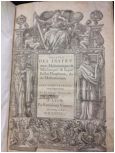
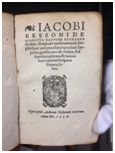
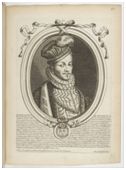
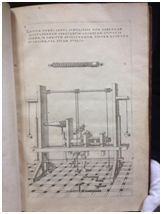
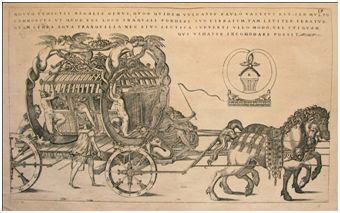

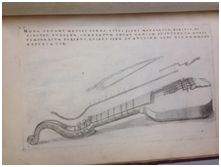

{ 0 comments… add one now }